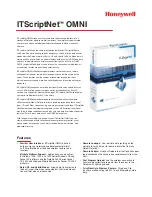
With WEP data encryption, a wireless station can be configured with up to four keys (the key index values are 1,
2, 3, and 4). When an access point (AP) or a wireless station transmits an encrypted message that uses a key
stored in a specific key index, the transmitted message indicates the key index that was used to encrypt the
message body. The receiving AP or wireless station can then retrieve the key that is stored at the key index and
use it to decode the encrypted message body
Because the WEP encryption algorithm is
vulnerable
to network attacks, you should consider using WPA-Personal
or WPA2-Personal security.
WPA-Personal
WPA-Personal Mode is targeted to home and small business environments. WPA Personal requires manual
configuration of a pre-shared key (PSK) on the access point and clients. No authentication server is needed. The
same password entered at the access point needs to be used on this computer and all other wireless devices that
access the wireless network. Security depends on the strength and secrecy of the password. The longer the
password, the stronger the security of the wireless network. If your wireless access point or router supports WPA-
Personal and WPA2-Personal then you should enable it on the access point and provide a long, strong password.
WPA-Personal makes available the TKIP and AES-CCMP data encryption algorithms.
WPA2-Personal
WPA2-Personal requires manual configuration of a pre-shared key (PSK) on the access point and clients. No
authentication server is needed. The same password entered at the access point needs to be used on this
computer and all other wireless devices that access the wireless network. Security depends on the strength and
secrecy of the password. The longer the password, the stronger the security of the wireless network. WPA2 is an
improvement over WPA and implements the full IEEE 802.11i standard. WPA2 is backward compatible with WPA.
WPA2-Personal makes available the TKIP and AES-CCMP data encryption algorithms.
NOTE
: WPA-Personal and WPA2-Personal are interoperable.
802.1X Authentication (Enterprise Security)
This section describes security common used by larger companies.
Overview
What is Radius?
How 802.1X Authentication Works
802.1X Features
Overview
The 802.1X authentication is independent of the 802.11 authentication process. The 802.11 standard provides a
framework for various authentication and key-management protocols. There are different 802.1X authentication
types and each provides a different approach to authentication, but all employ the same 802.11 protocol and
framework for communication between a client and an access point. In most protocols, after completion of the
802.1X authentication process, the client receives a key that it uses for data encryption. See
How 802.1X
authentication works
for more information. With 802.1X authentication, an authentication method is used between
the client and a server (for example a Remote Authentication Dial-In User Service (RADIUS) server) connected to
the access point. The authentication process uses credentials, such as a user's password, that are
not transmitted
over the wireless network. Most 802.1X types support dynamic per-user, per-session keys to strengthen the key
security. The 802.1X authentication benefits from the use of an existing authentication protocol known as the
Extensible Authentication Protocol (EAP).
The 802.1X authentication for wireless networks has three main components:
The authenticator (the access point)
The supplicant (the client software)
The authentication server
Intel® PROSet/Wireless WiFi Connection Utility User's Guide
















































